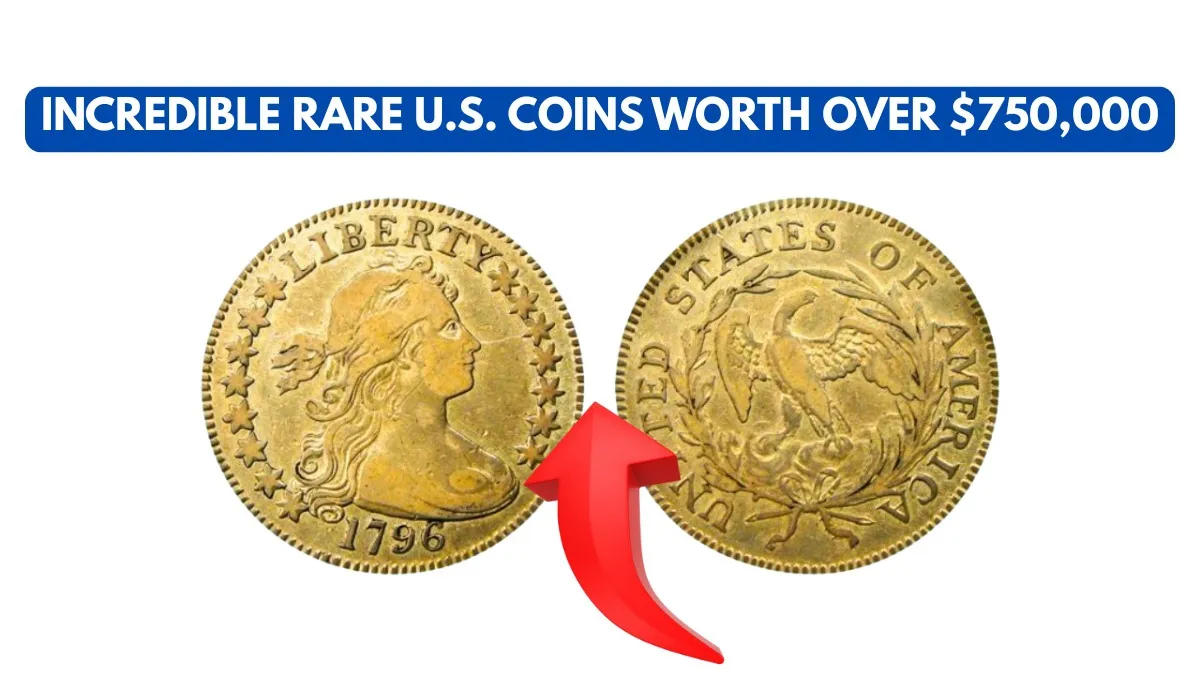Coins are more than just currency; they are tangible pieces of history. Some rare U.S. coins have become legendary, fetching millions of dollars at auction. These valuable coins are coveted not just for their metal content, but for the stories they tell about America’s past.
From the early days of the U.S. Mint to the economic upheaval of the Great Depression, each rare coin reflects pivotal moments in American history. In this blog, we’ll explore five incredible U.S. coins that have been valued at or sold for over $750,000, shedding light on their rarity, historical significance, and the fascinating tales they reveal about the nation’s development.
Rare U.S. Coins Worth Over $750,000
If you believe pocket change is just leftover cash, think again. Certain U.S. coins have sold for millions at auction, not because of their face value but due to their rarity, historical significance, and condition. Collectors worldwide vie for these treasures, turning these coins into assets worth far more than most homes.
Below, we highlight five incredible rare U.S. coins valued at or sold for over $750,000 — some fetching more than 20 times that amount. These aren’t just metal discs; they represent pieces of American history.
1. 1933 Saint-Gaudens Double Eagle – $18.9 Million
This $20 gold coin never circulated officially. Although 445,500 were minted, the U.S. Treasury ordered them to be melted down after abandoning the gold standard during the Great Depression. A few survived the melting process illegally. One such coin eventually became legal tender after a legal dispute, making it the most expensive coin ever sold.
Why It’s Rare: Nearly all coins were destroyed. Only a few are still legally held. Value Driver: Rarity, gold content, legal intrigue.
2. 1794 Flowing Hair Silver Dollar – $10 Million
This coin is considered one of the first silver dollars minted by the U.S. Mint under the Coinage Act of 1792. Its “Flowing Hair” design symbolizes liberty and America’s early independence.
Why It’s Rare: Likely one of the first silver dollars ever struck by the U.S. Value Driver: Historical significance, limited mintage, excellent preservation.
3. 1787 Brasher Doubloon – $9.36 Million
This gold coin, minted privately by New York goldsmith Ephraim Brasher before the U.S. Mint existed, is one of the earliest coins in American history. The most valuable version bears Brasher’s initials, “EB,” stamped on the eagle’s wing.
Why It’s Rare: It predates official U.S. coinage and was privately minted. Value Driver: Historical value, hand-crafted mint mark, extreme rarity.
4. 1822 Capped Head Left Half Eagle – $8.4 Million
This $5 gold coin is extraordinarily rare — only three are known to exist today. Two of these coins are housed in the Smithsonian Institution, leaving just one available to collectors.
Why It’s Rare: Only three known examples. Value Driver: High rarity, limited availability for collectors.
5. 1804 Draped Bust Silver Dollar (Class I) – $7.68 Million
Although dated 1804, these coins were actually struck in the 1830s as diplomatic gifts and were never meant to circulate. They were part of a special minting project intended for U.S. ambassadors.
Why It’s Rare: Fewer than 15 known specimens. Value Driver: Known as the “King of American Coins,” its scarcity and mystique increase its value.
WHY THESE COINS FETCH MILLIONS
These coins are not just valuable because of their metal content; they represent pivotal moments in American history. Their high value comes from:
- Condition and Grade: Coins graded as “MS-65” or higher are especially coveted.
- Historical Significance: Events like the Gold Reserve Act or early minting regulations add to their appeal.
- Rarity: Fewer known coins often lead to higher auction prices.
- Legal Status: For example, the 1933 Double Eagle’s legal status made headlines.
COLLECTING OR INVESTING? BE AWARE OF THE RISKS
While coin collecting can be highly profitable, it carries risks. Always authenticate coins through trusted sources like:
- U.S. Mint
- Professional Coin Grading Service (PCGS)
- Numismatic Guaranty Company (NGC)
Also, keep in mind that the IRS might consider rare coin sales as capital gains.
FINAL THOUGHTS
Owning one of these coins is like holding a piece of American history. Although most people won’t find a million-dollar coin in their pocket change, learning what to look for could lead you to a rewarding hobby.
Bottom Line
These rare U.S. coins offer much more than their face value. They symbolize key moments in American history, such as the transition to the gold standard, the establishment of the U.S. Mint, and diplomatic efforts. Collecting or investing in these coins can be lucrative, but it’s important to authenticate and understand the risks involved. Whether you’re a seasoned collector or just starting, these treasures serve as a unique link to America’s past.
FAQs
What makes rare U.S. coins so valuable?
Rarity, historical significance, condition, and legal status all contribute to a coin’s value.
Can I find rare coins in my pocket change?
It’s unlikely, but knowing what to look for can help you spot valuable coins.
How can I authenticate rare coins?
Authenticate rare coins through trusted organizations like the U.S. Mint, PCGS, and NGC.
Are rare coins considered a good investment?
Yes, they can be highly profitable, but like any investment, they come with risks and require proper research.
